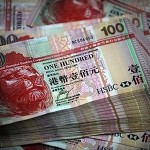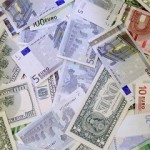The Norwegian krone traded little changed, after advancing for two weeks against the US dollar as data showed industrial output in Norway rose more than expected in February, boosting demand for the Scandinavian currency.
USD/NOK hit a session low at 5.9895 at 08:00 GMT, after which consolidation followed at 6.0015, adding 0.02% for the day. Support was likely to be received at April 4th low, 5.9749, while resistance was to be met at April 4th high, 6.0172.
Demand for the Norwegian krone was heightened after a report by Statistics Norway showed nations industrial production, expanded 5.2% in February from a year ago, more than double compared to Januarys 2.5% increase. On a monthly basis, industrial production rose 0.7% in February, after a 1.1% gain in the previous month. Industrial production is a key economic indicator and is closely watched by traders as it is a dominant sector of the Norwegian economy.
Data also showed that manufacturing output, which accounts for almost 80% of total industrial production, inched up 0.2% in February, after a 0.4% drop in the previous month, trailing analysts estimates for a 0.3% advance. On year-over-yer basis, manufacturing output expanded 2.1% in February, following a 2.7% gain in the previous month.
Meanwhile, demand for the greenback was pressured on Friday, after payrolls data came below market expectations.
Employers in all sectors of the US economy, excluding the farming industry, added 192 000 new jobs in March, after a revised 197 000 gain in the precious month that was higher than previously reported. The median experts’ forecast called for 200 000 new payrolls to be added last month. Jobs creation is considered of utmost importance for consumer spending, which accounts for almost 70% of the US economy.
In 2013, the US added 194 000 payrolls each month on average, while in 2012 the jobs created were 186 000.
Fed President for St. Louis James Bullard said on April 2 that if inflation slows further, decreasing the pace of Fed tapering cannot be ruled out, even though he didn’t expect that to happen.
However, Federal Reserve Chair Janet Yellen said on March 31 that the central bank needed to do more to fight against unemployment, because keeping interest rates near zero for more than five years and swelling its balance sheet with asset purchases seemed not to be enough. She also added that the US economy still needed monetary stimulus for “some time” and that most of the Fed officials shared the same opinion.
“The Fed is continuing to taper and there’s a relatively high hurdle for any deviation from that,” Eric Viloria, a currency strategist at Wells Fargo & Co. in New York, said in a Bloomberg phone interview on Friday.
The dollar rallied last month after Federal Reserve Chair Janet Yellen said the central bank’s bond-buying program may be brought to an end this fall, with borrowing costs starting to rise by mid-2015. The Federal Reserve trimmed its monthly bond-buying program by $10 billion at the last three meetings.





